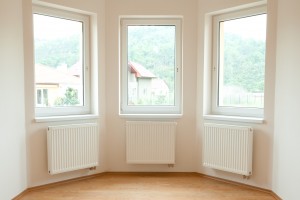
Energy Conscious Construction
New homes today are meant to be built with extremely high standards in regards to energy efficiency. Some of the areas a new home builder should invest money in are exterior insulation, high-efficiency heating systems, low-cost lighting solutions and proper sealing around exterior components (i.e. attic and sill insulation, electrical boxes on exterior walls, heating and air conditioning ducts, etc.). In older homes it can be more challenging to meet the needs of todays energy standards but there are certainly measure that can be taken to improve the overall efficiency of the home.
All of our new homes and remodels are built with extreme care for the envelope, or the insulation and barrier between the living space and the exterior of the house. We pay attention to the small details that could cause major uncomfortable living environments in the future. For example, a beautiful kitchen and breakfast nook will make all of your friends jaws drop – however, if it is freezing cold by the windows no one will be able to enjoy it on a cold winter morning if it is not heated or insulated properly.
Energy Saving Tips: Heating and Air Conditioning
“Tune-up” your heating, ventilating and air-conditioning (HVAC) system with an annual maintenance contract. Even a new ENERGY STAR qualified HVAC system, like a new car, will decline in performance without regular maintenance. A contract automatically ensures that your HVAC contractor will provide “pre-season” tune-ups before each cooling and heating season. You save energy and money, and your system may last years longer with minimal costs for yearly maintenance fees.
Regularly change (or clean if reusable) HVAC filters every month during peak cooling or heating seasons. New filters usually only cost a few dollars. Dirty filters cost more to use, overwork the equipment and result in lower indoor air quality.
Control direct sun through windows, depending on the season and local climate. During cooling season, block direct heat gain from the sun shining through glass on the East and especially West sides of the facility. Depending on your facility, options such as “solar screens,” “solar films,” awnings, and vegetation can help keep facilities more cool. Over time, trees can attractively shade the facility, and help clean the air. Interior curtains or drapes can help, but it’s best to prevent the summer heat from getting past the glass and inside. During heating season, with the sun low in the South, unobstructed southern windows can contribute solar heat gained during the day.
Use fans to maintain comfortable temperature, humidity and air movement, and save energy year round. Moving air can make a somewhat higher temperature and/or humidity feel comfortable. Fans can help delay or reduce the need for air conditioning, and a temperature setting of only three to five degrees higher can feel as comfortable with fans. Each degree of higher temperature can save about 3 percent on cooling costs. When the temperature outside is more comfortable than inside, a “box fan” in the window, or large “whole facility” fan in the attic can push air out and pull in comfortable air from the outside.
Plug leaks with weather stripping and caulking. Caulking and weather stripping let you manage your ventilation, which is the deliberate controlled exchange of stuffy inside air for fresher outdoor air.
To learn more about indoor air quality in your facility visit the Environmental Protection Agency’s EPA Indoor Air Quality.
Energy Saving Tips taken from SBA.gov, read full article here
